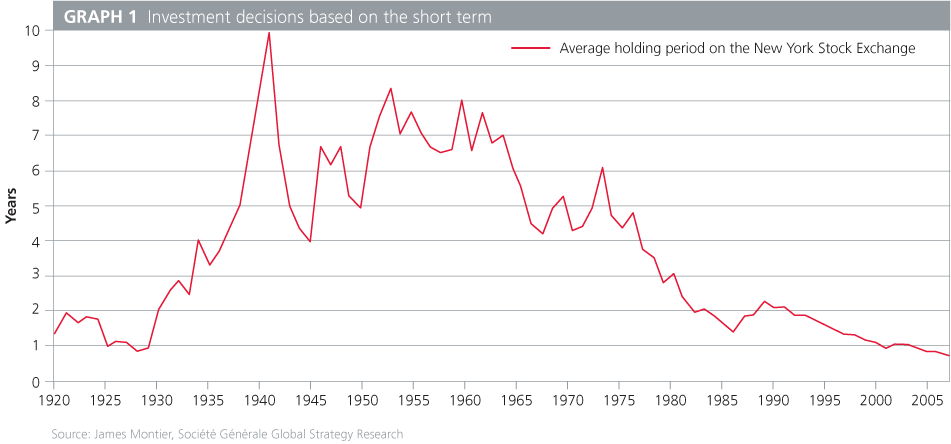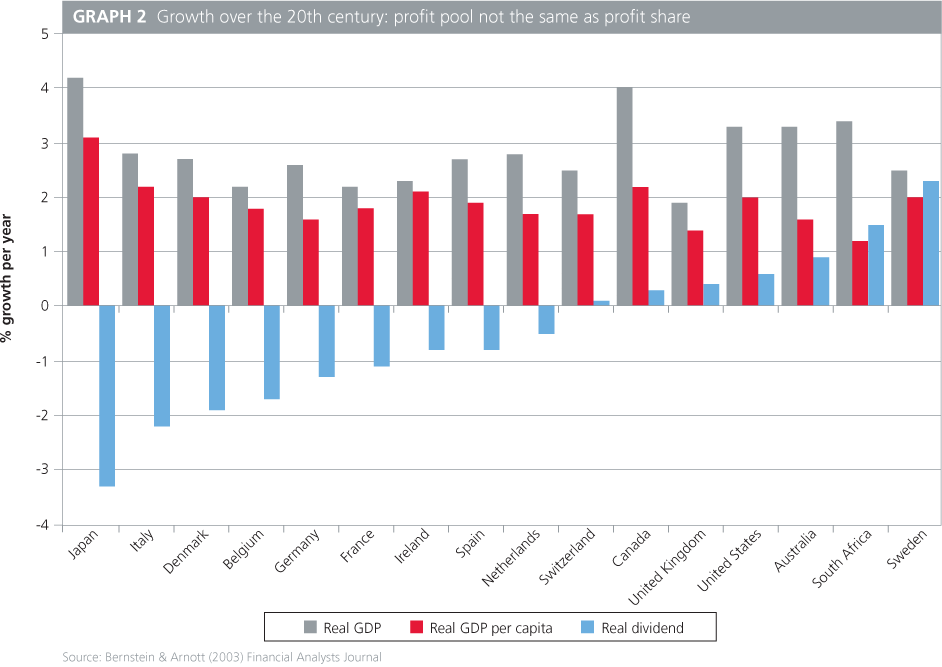EXECUTIVE SUMMARY: In the Q2 Quarterly Commentary, Jonathan Brodie and Trevor Black of Orbis discussed the fact that long-term outperformance requires a partnership between the investor and the manager. Focusing on investor behaviour, they emphasised the need for investors not to chase recent winners, especially once they have carefully selected managers; instead, they should try and focus on long-term goals. This quarter they turn the spotlight on Orbis, and investment managers in general, as they take a look at the second aspect of long-term performance experience: money manager behaviour over time.
Short-term focus has become endemic. The average holding period on the New York Stock Exchange (NYSE) has dropped to just six months from three to six years in the 1970s, and closer to 10 years in the early 1940s (see Graph 1). Although there are many ways to make money, we think that six months is simply too short a time to capture anything much more than market noise. In our view, this is a zero-sum trading game, and quite different from our own approach to investing. While we are not 'buy and hold' forever value managers, we do give our investment theses time to play out.
We use a 'bottom-up' approach to investing
Allan Gray and Orbis share a common investment approach and ethos. When we analyse a possible investment we look at the return we expect to receive over a four-year period. It is our experience that understanding companies and investing in them when they represent 'fundamental value' is far more rewarding than trying to predict economic, political and share market trends. Fundamental value is the value a prudent businessman would place on a business. This 'bottom-up' approach to investing involves detailed analysis of the business, its income, expenses, outlook and positioning within its industry.
The top-down model
Conversely, many managers start their analysis by looking for high-growth countries or industries in the belief that these will then lead to a high-growth profit pool, which in turn will result in attractive performance from the shares of companies with exposures to these areas. But is this top-down model a good representation of the real world over time? And how has the variation in growth rates between countries impacted on the growth in company profits in those countries? Allan Gray Chairman Simon Marais conducted some research into this question. Graph 2 shows the overall economic growth rate and the per capita growth rate of 14 countries over the 20th century.


The analysis uses real dividend growth per share as a proxy for earnings, largely because earnings are impacted by accounting changes. Looking at the blue bars, the growth in real dividends per share over time, amazingly you see very little correlation with economic growth. If someone did you the favour of telling you which would be the winning economy over the next 100 years, it is not clear that that is of any help at all in directing your investments. Rather than overall economic conditions, or even industry trends, the profit and return performance of an individual company are importantly determined by the competitive landscape. In a rapidly growing economy the profit cake grows quickly, but increased competition may mean your slice does not grow at all. On the other hand, a stagnating economy or industry does not attract the brightest entrepreneurs. There is little new competition and some players may well leave the industry. Often this leads to better margins for the incumbents.
How we define risk
Coupled with our contrarian approach to investing, we also have a different approach to risk. Most traditional measures look at risk as the chance of being different or more volatile than others. We define risk in terms of permanent capital loss. As a result, rather than tracking the market, what we focus on is looking obsessively at what can go wrong, looking for a 'margin of safety' and focusing on the valuation risk, earnings risk and balance sheet risk of our specific holdings. We invest in businesses when we believe their share prices are below intrinsic business value. This means we are offered some protection if things turn out worse than we forecast (i.e. a margin of safety exists). As we do not get it right all the time, by purchasing with a margin of safety we hope to minimise or avoid the loss of capital.
Because our definition of risk does not push us to look the same as the market, we are prepared to position ourselves quite differently. By way of example in terms of regions, in late 1994 Orbis was 27% overweight in the US, and in late 2003 we were 30% underweight in the US. In May 1990, we were 37% underweight in Japan, and in 1998 we were 41% overweight in Japan. The key point is that we do not look at investing from a macro perspective first. We look at companies first, and we allow our weightings to differ significantly from the market, based on our conviction in the individual selections. We are benchmark unaware.
The result of this approach is that our 'tracking error', which measures how different a manager is from the crowd, can be very significant. Why would we want any error in the portfolio? Despite the term, we look to maintain our tracking error over time because you cannot generate long-term outperformance successfully without being different and the tracking error is one indication of this difference. Since inception, the tracking error of the Orbis Global Equity Fund has averaged 10.1%, giving us the potential to outperform.
So what?
This all seems rather obvious. Pick stocks as you would pick a business you want to buy. Do not do what everyone else is doing. So why does everyone not do this?
ALTHOUGH THERE ARE MANY WAYS TO MAKE MONEY,...SIX MONTHS IS SIMPLY TOO SHORT A TIME TO CAPTURE ANYTHING MUCH MORE THAN MARKET NOISE
The answer is at once simpler and, unfortunately, tougher than that. There is no secret formula. It takes persistence, both on the part of the analyst and the investor to sustain what many understand to be the 'right' approach. Behaving differently from the market will come to challenge your conviction. Outperformance does not come in a straight line; there are some sustained periods of disappointing performance and quite simply, we are not always correct.
The reason more people do not practise this form of investing is that they cannot withstand the pressure of being different from the crowd and of bearing the consequences of periodically being wrong. While we cannot guarantee future performance, we can come close to guaranteeing that we will again have periods where we will challenge your conviction. The only way to sustain your conviction is to understand our investment process. For our part, we continue to focus on building that process and our capacity for excellent research.